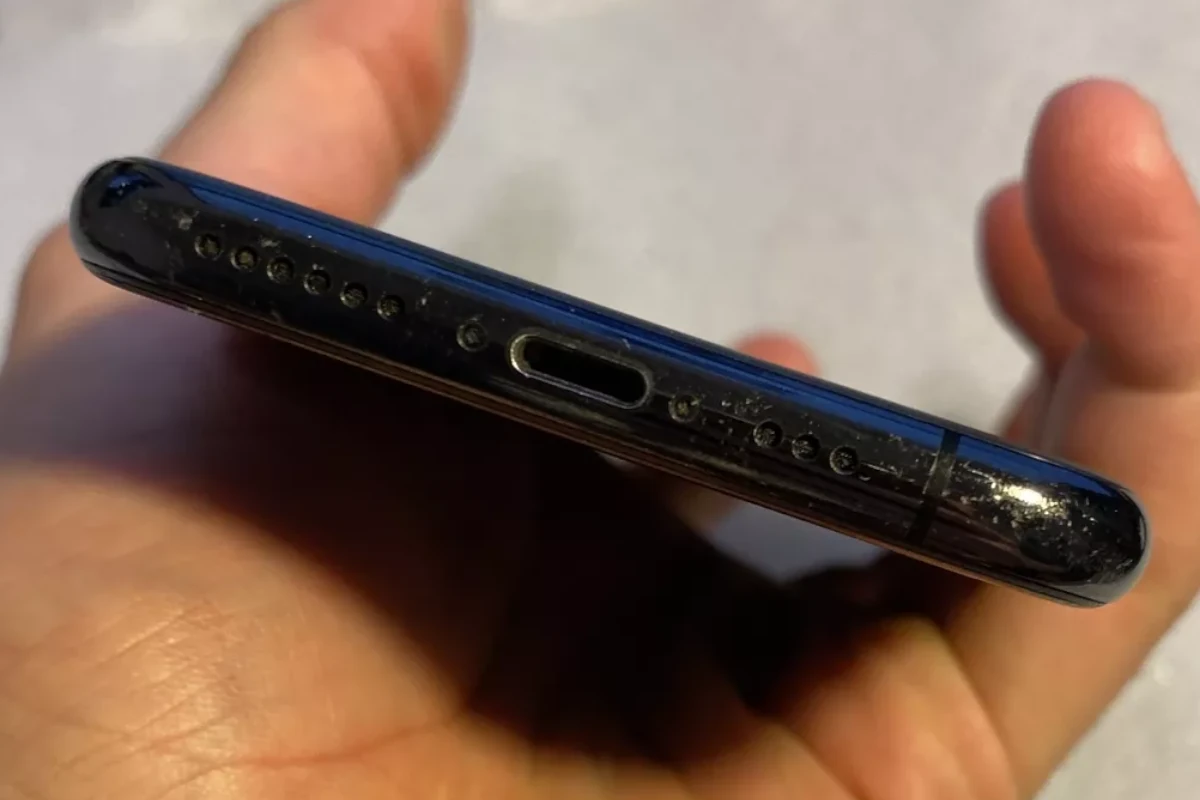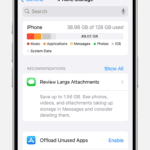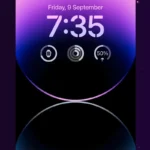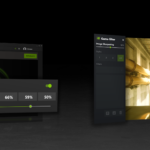Is your iPhone not charging? Don’t panic. The most common causes are a dirty charging port, faulty cable, or software glitch – all of which you can easily fix at home.
Your iPhone may stop charging for various reasons. A buildup of dust and debris in the charging port often prevents proper connection. Sometimes, the charging cable or adapter is damaged. In other cases, a software issue might be the culprit.
Before rushing to replace your battery or charging port, try some simple fixes. Clean the port with a soft brush, test different cables and power sources, and update your iPhone’s software. These steps solve most charging problems without the need for professional repair.
| Common Causes | Quick Fixes |
|---|---|
| Dirty port | Clean with brush |
| Faulty cable | Try another cable |
| Software issue | Update iOS |
| Bad power source | Use different outlet |
Troubleshooting a Temperamental iPhone Battery: Why Won’t It Charge?
Discovering your iPhone won’t charge can be a major inconvenience. Before you panic, let’s troubleshoot some common causes and get your device powered up again.
1. The Obvious Culprits
Start with the simplest checks:
- Connection Check: Ensure your charging cable is firmly plugged into both your iPhone and the power adapter.
- Outlet Check: Make sure the power adapter is plugged into a working wall outlet. If you’re using a power strip or surge protector, ensure it’s switched on.
- Cable Inspection: Examine your charging cable for any signs of damage, like fraying or bent connectors. A damaged cable can prevent proper charging.
2. Try a Different Approach
If the basics check out, try these alternatives:
- Outlet Swap: Test the power adapter in a different wall outlet to rule out a faulty outlet.
- Cable Swap: If you have a spare Lightning cable (or USB-C for newer models), try using that one instead.
- Adapter Swap: Try a different power adapter, like the one that came with your iPad or a higher-wattage adapter. iPhones can charge faster with higher-wattage adapters.
- Computer Connection: Connect your iPhone to a computer’s USB port to see if it charges. This can help identify whether the issue is with the adapter or the iPhone itself.
3. Inspect the Charging Port
Dust, lint, or debris can accumulate in the iPhone’s charging port and obstruct the connection.
- Visual Check: Shine a light into the port to check for any blockages.
- Gentle Cleaning: Use a can of compressed air or a soft, dry brush to carefully remove any debris. Avoid using sharp objects that could damage the port.
4. Restart Your iPhone
A simple restart can sometimes resolve software glitches that might interfere with charging.
- iPhone without a Home button: Press and quickly release the volume up button, then the volume down button. Press and hold the side button until the Apple logo appears.
- iPhone with a Home button: Press and hold either the side button or the top button until the slider appears. Drag the slider to turn your device completely off. After the device turns off, press and hold either the side button or the top button again until you see the Apple logo.
5. Software Update Check
Outdated software can occasionally cause charging problems.
- Go to Settings: Open the Settings app on your iPhone.
- Select General: Tap on “General.”
- Tap on Software Update: Check if there are any available updates and install them.
6. Temperature Considerations
Extreme temperatures can affect your iPhone’s ability to charge.
- Avoid Extremes: Don’t leave your iPhone in direct sunlight or very cold environments.
- Cool Down Time: If your iPhone feels hot, let it cool down before attempting to charge it.
7. Restore Your iPhone (Advanced)
If all else fails, you can try restoring your iPhone to its factory settings. Important: This will erase all data on your iPhone, so make sure you have a backup first.
- Connect to a Computer: Connect your iPhone to a computer with iTunes or Finder installed.
- Put iPhone in Recovery Mode: Follow Apple’s instructions for putting your specific iPhone model into recovery mode (you can find these on Apple’s support website).
- Restore in iTunes/Finder: Follow the on-screen prompts in iTunes or Finder to restore your iPhone.
8. Contact Apple Support
If none of these steps resolve the issue, it’s time to contact Apple Support or visit an Apple Store. There might be a hardware problem that requires professional repair.
Basic Troubleshooting Steps
When your iPhone won’t charge, start with these simple yet effective methods. They often resolve charging issues without needing professional help.
Examining the Charging Cable and Power Source
Check your charging cable for visible damage. Look for fraying, kinks, or exposed wires. If you spot any issues, replace the cable. Test different power sources too. Try a wall outlet instead of a computer USB port. Use a different USB power adapter if possible.
Ensure your cable is firmly connected at both ends. Loose connections can prevent charging. If using a wireless charger, confirm proper alignment with your iPhone.
| Cable Type | Compatible with |
|---|---|
| Lightning | iPhone 5-14 |
| USB-C | iPhone 15+ |
Cleaning the Charging Port
Dirt and debris in the charging port can block connections. Power off your iPhone before cleaning. Use a soft, dry brush or compressed air to remove lint or dust. Avoid metal tools or liquids which may damage the port.
Gently brush inside the port. Be careful not to bend or break the connectors. After cleaning, try charging again. If it works, you’ve solved the problem.
Force Restarting the iPhone
Sometimes, a force restart can fix charging issues. The method varies by iPhone model:
- For iPhone 8 or later: Press and release volume up, then volume down. Hold the side button until you see the Apple logo.
- For iPhone 7: Hold the volume down and side buttons together until the Apple logo appears.
- For iPhone 6s or earlier: Hold the home and power buttons until you see the Apple logo.
After restarting, try charging again. If it works, your iPhone likely had a temporary software glitch.
Advanced Charging Solutions
When your iPhone won’t charge, several advanced techniques can help. These methods go beyond basic troubleshooting to address more complex charging issues.
Using Wireless Charging
Wireless charging offers a convenient alternative when wired charging fails. Most iPhones from the 8 series onward support this feature. To use wireless charging:
- Get a Qi-certified charger
- Remove your phone case if it’s too thick
- Place your iPhone on the charging pad
Align your device correctly on the pad for optimal charging. Look for the charging indicator on your iPhone’s screen. If it doesn’t appear, adjust the position slightly.
Wireless charging is typically slower than wired methods. It works best for overnight charging or when you’re not in a hurry. Some wireless chargers can deliver faster speeds, but they may cost more.
Checking for Optimized Battery Charging
Optimized Battery Charging can sometimes interfere with normal charging. This feature aims to reduce battery aging by delaying charging past 80%. To check or disable it:
- Go to Settings > Battery > Battery Health
- Look for “Optimized Battery Charging”
- Toggle it off if needed
Disabling this feature may help if your iPhone isn’t charging fully. But remember, it’s designed to extend your battery’s lifespan. Only turn it off if you’re experiencing persistent charging issues.
After disabling, monitor your battery health closely. You might need to re-enable it later to maintain long-term battery performance.
Entering DFU Mode
DFU (Device Firmware Update) mode is a last resort for charging problems. It allows your iPhone to connect to iTunes without activating the operating system. To enter DFU mode:
- Connect your iPhone to a computer
- Press and quickly release the Volume Up button
- Press and quickly release the Volume Down button
- Press and hold the Side button until the screen goes black
- Hold the Side button and Volume Down button for 5 seconds
- Release the Side button but keep holding Volume Down
If successful, your screen will stay black. iTunes should detect a device in recovery mode. This process can help if software issues are preventing charging.
Be cautious with DFU mode. It can erase your device. Always back up your data before attempting this method.
| Charging Method | Pros | Cons |
|---|---|---|
| Wireless | Convenient, no port wear | Slower, requires compatible device |
| Wired | Faster, widely available | Can strain charging port |
| DFU Mode | Fixes deep software issues | Risk of data loss, complex process |
Software and Hardware Considerations
When your iPhone won’t charge, both software and hardware factors can be at play. Addressing these issues often involves updating iOS, checking battery health, and sometimes seeking expert help.
Updating iOS
Keeping your iPhone’s operating system up to date is crucial for resolving charging problems. Outdated software can sometimes interfere with the charging process. To update iOS:
- Connect your iPhone to Wi-Fi
- Go to Settings > General > Software Update
- If an update is available, tap “Download and Install”
Make sure your iPhone has enough battery life or is plugged in during the update. After updating, restart your device to apply changes fully.
If your iPhone still won’t charge after updating, try a force restart. This can clear minor software glitches affecting charging.
Assessing Battery Health
Your iPhone’s battery health directly impacts its charging ability. To check battery health:
- Open Settings
- Tap Battery > Battery Health
Look for Maximum Capacity percentage. If it’s below 80%, your battery may need replacement.
| Battery Health | Action Needed |
|---|---|
| 100% – 80% | Normal |
| 79% – 60% | Monitor |
| Below 60% | Replace soon |
If you see “Service” messages, your battery needs attention. Poor battery health can lead to charging issues or false charging indicators.
Seeking Professional Support at the Genius Bar
When software updates and battery checks don’t solve the problem, it’s time to visit the Genius Bar. Apple’s tech experts can:
- Run diagnostic tests
- Check for hardware damage
- Replace faulty components
To book a Genius Bar appointment:
- Open the Apple Support app
- Select your device
- Choose the issue and follow prompts
At your appointment, explain all troubleshooting steps you’ve tried. This helps the technician pinpoint the issue faster.
Remember, attempting repairs yourself can void your warranty. Let the professionals handle complex hardware problems.
Frequently Asked Questions
iPhone charging issues can be frustrating. Here are some common questions and solutions to help you troubleshoot when your device won’t power up.
How can I clean the charging port on my iPhone?
Use a soft-bristled brush or compressed air to remove debris. Gently brush inside the port or blow air to dislodge lint and dust. Avoid metal tools that could damage the contacts.
What should I do if my iPhone won’t charge or turn on?
Try a force restart by quickly pressing the volume up and down buttons, then holding the side button. If this fails, connect to a power source for 30 minutes before attempting again.
Why does my iPhone indicate it’s charging but the battery percentage doesn’t increase?
Check your charging cable and adapter for damage. Use an Apple-certified charger. Ensure the power outlet works. If problems persist, your battery may need replacement by an authorized service provider.
What steps should I take if my iPhone won’t charge after exposure to liquid?
Unplug all cables and don’t charge your device. Dry it thoroughly for at least 5 hours. Tap it gently against your hand with the connector facing down to remove excess liquid. Try charging only when completely dry.
What troubleshooting methods can I try if my iPhone’s charging port isn’t working?
Inspect the port for damage or debris. Try different cables and power sources. Update your iOS software. If issues continue, contact Apple Support or visit an authorized service provider for further assistance.
What actions can I take if my iPhone model is plugged in but not charging?
Check your cable and adapter for visible damage. Try a different power outlet. Ensure the charging port is clean. If problems persist, try a force restart or contact Apple Support for advanced troubleshooting.
| Issue | Quick Fix |
|---|---|
| Dirty port | Clean with soft brush |
| Won’t turn on | Force restart |
| Wet iPhone | Dry for 5+ hours |
| Cable issues | Try different cable |
| Software glitch | Update iOS |







